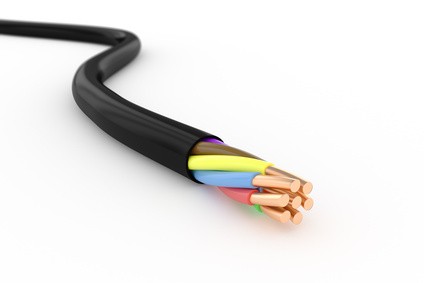Almost nothing in the car runs without electricity
16/08/2010
Someone with a 1970 Mercedes 200D / 8 could run the engine even after the power supply was turned off. But the days of purely mechanically controlled pre-chamber injection pumps are long gone. Hybrid or electric vehicles are not the only ones dependent on the supply of electric energy. Several vehicles have more than 100 ECUs (electronic control units), which are all supplied with electricity.
As part of a large number of studies on engine components and auxiliary requirements, the technical development of various control elements were investigated. Today, not only injection pumps are controlled electronically. The engine control is the most important as it ensures control over the fuel injection and ignition. For the precise function of the control element for motor control, each actuator has to operate with precision, power and speed. The control is always performed electronically via motors or electromagnetically via actuators or switching valves. The increasingly stringent emission regulations require even higher accuracy, which in some cases requires electromotive actuation with position feedback.Due to the exhaust and consumption requirements, the operating requirements should only provide for the actual required power of the pump. For this switchable or controllable pumps are used, which if mechanically driven by the engine will run indefinitely and thus always incur a power loss. Consideration should be made whether they should be downsized and supplemented by an electrically driven pump or be replaced.
For the use of electric coolant pumps, as an example, there are several reasons. First it can be avoided that the pump needs to run during a cold start, as this is not necessary at first from a technical point of view. Therefore, BMW has in some engines introduced an electric water pump which only turns on when the temperature of the engine requires a cooling system. Second, the electrically operated pump always runs with the speed demanded.In transmission, steering and suspension, the electronics today often ease operation and improve comfort. This is important for the transmission for fuel efficient gear shifts. The electronic transmission control coordinates with the engine so that the right gear is always used. Magnetic valves which are mounted directly on the transmission control circuit board switch on each gear by means of hydraulic channels. In addition, e. g. an auxiliary electric pump guarantees the oil pressure supply in start-stop operations.For now, most passenger car steering systems are supported purely electrically. Thus, other additional functions that improve safe driving can be integrated. Only in large vehicles and off-road vehicles electro-hydraulic solutions will dominate for a few more years, as the maximum power is limited by the system voltage.Electronically controlled shock absorbers have become increasingly standard in the upper vehicle categories also. The advantage is that they adapt the damping rate according to the driving speed and driving conditions.Despite the increasing additional equipment with electric components surrounding the engine and chassis, the available electrical power has not become significantly larger. Therefore a moderate use of electric components in the vehicles is essential and thus challenges developers. Allocation of time slots and prioritization of the most important functions can limit the electrical energy only to the current needs.The trend towards electrification naturally changed the demands on suppliers and also will undoubtedly lead to a change in today’s supplier landscape. Through partnerships and acquisitions in the industry, companies will try build up their know-how.
For the use of electric coolant pumps, as an example, there are several reasons. First it can be avoided that the pump needs to run during a cold start, as this is not necessary at first from a technical point of view. Therefore, BMW has in some engines introduced an electric water pump which only turns on when the temperature of the engine requires a cooling system. Second, the electrically operated pump always runs with the speed demanded.In transmission, steering and suspension, the electronics today often ease operation and improve comfort. This is important for the transmission for fuel efficient gear shifts. The electronic transmission control coordinates with the engine so that the right gear is always used. Magnetic valves which are mounted directly on the transmission control circuit board switch on each gear by means of hydraulic channels. In addition, e. g. an auxiliary electric pump guarantees the oil pressure supply in start-stop operations.For now, most passenger car steering systems are supported purely electrically. Thus, other additional functions that improve safe driving can be integrated. Only in large vehicles and off-road vehicles electro-hydraulic solutions will dominate for a few more years, as the maximum power is limited by the system voltage.Electronically controlled shock absorbers have become increasingly standard in the upper vehicle categories also. The advantage is that they adapt the damping rate according to the driving speed and driving conditions.Despite the increasing additional equipment with electric components surrounding the engine and chassis, the available electrical power has not become significantly larger. Therefore a moderate use of electric components in the vehicles is essential and thus challenges developers. Allocation of time slots and prioritization of the most important functions can limit the electrical energy only to the current needs.The trend towards electrification naturally changed the demands on suppliers and also will undoubtedly lead to a change in today’s supplier landscape. Through partnerships and acquisitions in the industry, companies will try build up their know-how.